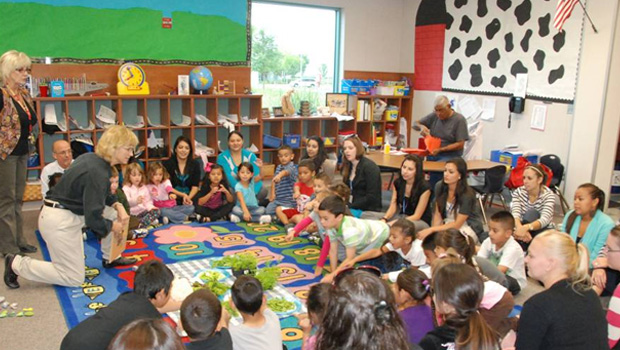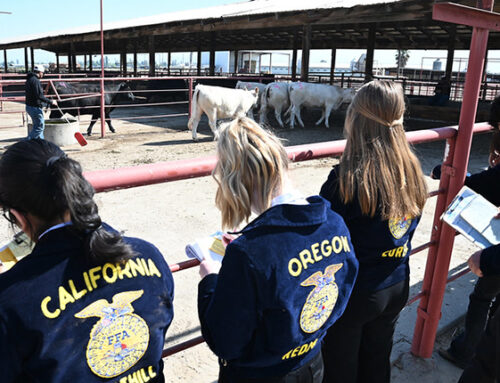The teacher prep partnership between the Fresno State Kremen School of Education and Human Development and Sanger Unified School District, which helped the Fresno County school district move from the bottom of California’s school index to the top, as well as decrease its teacher attrition, has been nationally recognized as a model for clinical preparation in teacher education.
The American Association of Colleges for Teacher Education mentions the partnership in a new report released March 20, the Professional Education Data System (PEDS), which measures the progress of professional education programs and research and highlights challenges in higher-education-based teacher preparation.
The PEDS report provides member-specific data on enrollment, degrees, program completion, faculty and resources with nine findings presented.
Fresno State’s program was one of two cited in its third finding, “Clinical Preparation Is Part of All Teacher Preparation Programs.” The other was Montclair State University.
The clinical finding says that “preparation programs that are focused more on the work of the classroom and that allow teachers to engage in the actual practices involved in teaching tend to produce first year teachers who are more likely to remain in the profession than those from less clinically-based programs.”
Its citation on Fresno State and Sanger Unified says:
“California State University at Fresno partnered with the Sanger Unified School District to design a teacher preparation program that would meet the personnel needs of the district and provide an intensive clinical experience for teacher candidates.
The school district has a diverse student population comprising 82% from minority groups and 25% English language learners. Over the last 8 years, the school district has moved from the bottom of California’s school index to the top, in part because of the partnership. Additionally, teacher attrition has dropped from 40% to 4.6% in 2011 and to 4.4% in 2012.
Within this initiative, candidates spend a full year in the schools during their student teaching phase with extensive support from the university and the schools. Candidates practice co-teaching and solo-teaching, they participate in school-based professional learning communities with practicing teachers, and they receive preparation in implementing a Response to Intervention model in mathematics and reading. The university course work is offered at the school sites.”
The report is expected to be an annual assessment of teacher education preparation that will guide educators and community leaders to strengthen the teacher workforce.
“As the field moves forward with reforms, the information in this report can provide benchmarks or guideposts to inform our progress,” said Sharon P. Robinson, AACTE president and CEO. “The report’s findings will undoubtedly fuel conversation and hopefully action among educator preparation providers, education researchers, PK–12 practitioners and other stakeholders.”
The American Association of Colleges for Teacher Education (AACTE) is a national alliance of educator preparation programs “dedicated to the highest quality preparation and professional development of teachers, school leaders and other school personnel in order to enhance PK–12 student learning.”
Related Links:




